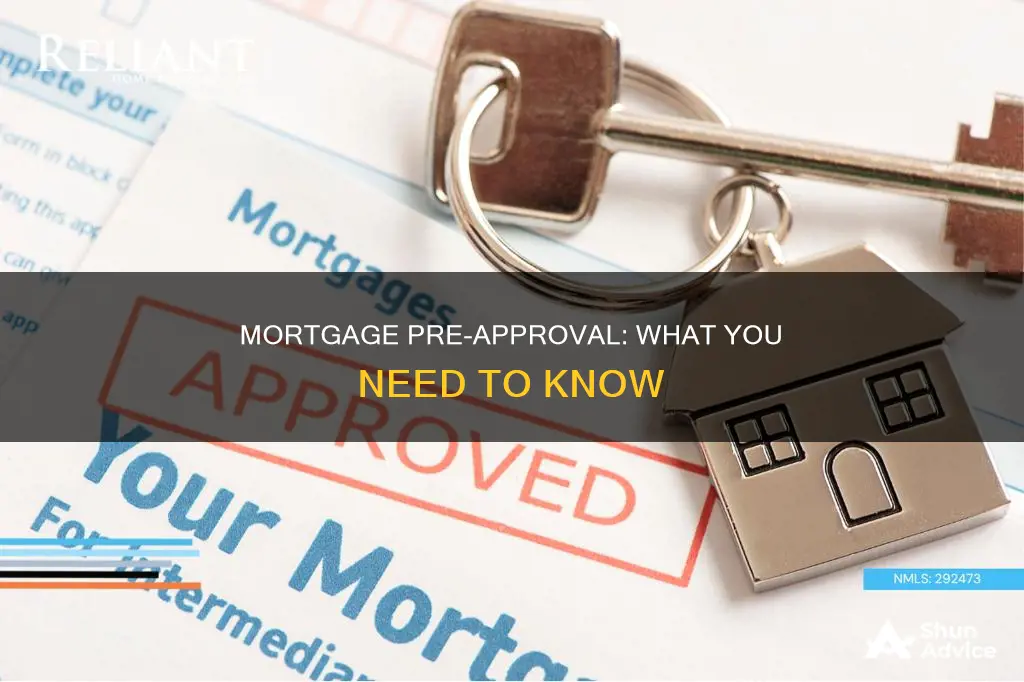
Getting preapproved for a mortgage is an important step in the process of buying a home. It helps you determine how much you can afford to spend on a property and demonstrates to sellers that you are a serious buyer. To get preapproved, you'll need to complete a mortgage application and provide the lender with information about your finances, including your credit score, income, debt, and assets. The lender will then review your application and credit history to determine if you qualify for preapproval and how much you can borrow. This process can often be done online and may take just a day to complete. Once preapproved, you'll receive a preapproval letter, which is typically valid for 30 to 90 days, and outlines the approved loan amount, maximum loan amount, interest rate, estimated payments, and other important details. It's worth noting that preapproval does not guarantee a mortgage, and final approval usually occurs once an appraisal of the chosen property is completed.
| Characteristics | Values |
|---|---|
| Prequalification | An optional step that can help you fine-tune your budget. |
| Preapproval | An essential part of your journey to getting mortgage financing. |
| Preapproval conditions | Lenders will check your credit score and credit history. |
| Lenders will examine your finances, including debt, income, and assets. | |
| Lenders will require documentation. | |
| Lenders will look at your debt-to-income (DTI) ratio. | |
| Lenders will look at the loan-to-value (LTV) ratio. | |
| Lenders will require a FICO score of 620 or higher for a conventional loan or 580 for a Federal Housing Administration loan. | |
| Lenders will require two years of continuous employment. | |
| Lenders will require proof of the source of your down payment. | |
| Lenders will provide a preapproval letter. |
What You'll Learn

Preapproval vs prequalification
When applying for a mortgage, it is important to understand the differences between preapproval and prequalification. Both terms refer to steps that lenders take to verify that a client can afford a mortgage. However, preapproval is a more official step that requires the lender to verify your financial information and credit history.
Prequalification is a quick process that can be done online, and you may get results within an hour. It is based on an informal evaluation of your finances, including your credit, debt, income, and assets. The lender then estimates whether you can qualify for a mortgage and how much you may be able to borrow. It is an opportunity to learn about different mortgage options and work with your lender to identify the right fit for your needs and goals. After prequalification, you will usually receive a prequalification letter that you can show to an agent or seller as proof of what you may be able to afford.
Preapproval, on the other hand, requires more time and documentation, such as pay stubs, tax returns, and your Social Security card. The lender will verify the information you provide and perform a credit check. If you are preapproved, you will receive a preapproval letter, which is an offer to lend you a specific amount, usually valid for 90 days. This letter indicates that a lender has verified your financial information and that you can afford a mortgage. It gives sellers confidence that you are a serious buyer and increases your chance of having your offer selected.
While prequalification provides a general idea of how much you may be approved for, preapproval determines how much you can borrow for your mortgage and is a more specific estimate. Preapproval is as close as you can get to confirming your creditworthiness without having a purchase contract in place. It is a critical step that shows you are serious about buying a home and can give you a competitive edge in the market.
Understanding Your Mortgage: Do You Have a Balloon Payment?
You may want to see also

How to get preapproved
Preapproval for a mortgage is a more formal process than prequalification and involves a thorough review of your financial information. It is a smart step to take when you are ready to put in an offer on a home. It's important to note that preapproval is not a guarantee that you will get a mortgage, and you will need to get a full approval once you find your home.
To get preapproved, you will need to provide detailed financial information to your lender, who will then verify this information. This includes your Social Security number, current address, employment details, income, debt, bank and investment account information, and tax forms. Lenders prefer two years of continuous employment, but there are exceptions. Self-employed applicants will likely have to provide two years of income tax returns. If your down payment will come from a gift or the sale of an asset, you will need to provide a paper trail.
You can get preapproved by contacting a lender and completing a mortgage application. This can often be done online. You can use a preapproval documentation checklist to ensure you have all the necessary documents. Once you have submitted all your information, you should receive a loan estimate within 3 business days. You will then receive a preapproval letter, which is typically valid for 60-90 days.
It is recommended to have a credit score of at least 620 to qualify for a mortgage, and a higher score will get you better rates. Preapproval usually requires a hard inquiry into your credit, which may cause your credit score to drop slightly. However, this drop is not significant, and subsequent inquiries from other mortgage lenders within 30 days will not affect your score.
Navigating VA Mortgage Problems: A Step-by-Step Guide
You may want to see also

Lender requirements
Lenders will want to see that you have a good credit score and a low debt-to-income (DTI) ratio. Lenders prefer a DTI of 36% or below, but some programs may allow a DTI ratio of up to 50% with high credit scores or extra mortgage reserves. Lenders will also want to see that you have a steady income and employment history. They will likely ask for two years of continuous employment, but there are exceptions. If you are self-employed, you will likely need to provide two years of income tax returns, as well as additional documentation such as profit and loss statements, accounts receivable, and 1099s.
You will also need to provide documentation such as Social Security numbers, proof of income, banking information, and tax forms. Lenders will want to verify your down payment and closing costs, so be prepared to provide a paper trail if your down payment is coming from a gift or the sale of an asset. Additionally, if you already own a home, the lender will want to know its value, the monthly expenses associated with it, and its occupancy status.
It's important to note that preapproval is not a guarantee of a mortgage, and lenders will look at every detail of your finances when granting preapproval. The process may also result in a temporary dip in your credit score, as it involves a hard credit check. However, getting preapproved can help you determine how much you can spend on a home and speed up the mortgage application process.
Refinancing Your Mortgage: A Guide to Navigating the Process
You may want to see also

What preapproval means for sellers
A mortgage preapproval is a confirmation of a buyer's creditworthiness and ability to secure a mortgage. It is an important step in the home-buying process as it gives buyers a competitive edge and increases their chances of having their offer selected by the seller.
Sellers often prefer buyers with mortgage preapprovals as it demonstrates that the buyer is serious about their offer and that the sale is more likely to close. A preapproval also helps to streamline the closing process, benefiting both the buyer and the seller.
During the preapproval process, lenders will verify a buyer's financial information, credit history, and employment to determine their eligibility for a loan. They will also perform a credit check and evaluate the buyer's income, assets, and debts, and other financial details. This allows the lender to provide a more specific estimate of how much the buyer can borrow and results in the issuance of a preapproval letter.
The preapproval letter is a formal offer from the lender to lend a specific amount to the buyer, usually valid for 30 to 90 days. This letter plays a crucial role in the home-buying process as it assures sellers that the buyer is creditworthy and capable of securing the necessary financing. It is important to note that a preapproval letter is not a guaranteed loan offer, and final approval may depend on additional factors, such as an appraisal of the property and verification of the seller's ownership.
While a preapproval letter gives buyers an advantage, it is not a commitment to using a particular lender. Buyers can still decide on the best lender for their needs after receiving preapproval letters and comparing loan estimates.
Finding Your Mortgage History: A Step-by-Step Guide
You may want to see also

Finalising preapproval
Understanding Preapproval
Firstly, it is essential to understand the difference between prequalification and preapproval. Prequalification is an informal evaluation of your finances, providing an estimate of what you can borrow. It is often done online or over the phone and does not require documentation. Preapproval, on the other hand, is a more official step where the lender verifies your financial information and credit history. It requires documentation and results in a preapproval letter indicating the lender's commitment to lend a specific amount.
Lender Requirements
Different lenders have varying requirements for preapproval. Generally, they will consider your credit score, credit history, income, debt, and assets. Lenders prefer a low debt-to-income (DTI) ratio, typically below 43%, and may request income verification documents or tax returns. They may also ask about your employment history, with a preference for two years of continuous employment. If you are self-employed, be prepared to provide additional documentation, such as tax returns.
The Preapproval Process
The preapproval process involves completing a mortgage application and providing the necessary documentation. Lenders will perform a credit check and verify your financial information. They may inquire about specific transactions or details in your credit history. It is important to be transparent and provide accurate information. The process can take anywhere from a day to a week or more, depending on the lender and the completeness of your application.
Receiving the Preapproval Letter
Once your preapproval is finalised, you will receive a preapproval letter, typically within 10 business days of providing all requested information. This letter is valid for a specific period, usually 30 to 90 days, and indicates the lender's commitment to lend you a specific amount. It is an essential document that you can submit with any home purchase offers, demonstrating to sellers that you are a serious and qualified buyer.
Post-Preapproval Considerations
Even after receiving preapproval, it is important to maintain financial stability. Avoid applying for new credit, making large purchases, or missing loan or credit card payments, as these can impact your creditworthiness. Additionally, be prepared for a home appraisal, which confirms the value of the home you intend to purchase. Lenders typically will not provide a mortgage for more than a home is worth.
In summary, finalising preapproval involves providing detailed financial information, undergoing a credit check, and receiving a preapproval letter from your lender. This letter enhances your credibility as a homebuyer and sets you on a path to securing your dream home.
Who Owns My Mortgage? Finding Your Mortgage Investor
You may want to see also
Frequently asked questions
Mortgage pre-approval is a written verification from a mortgage lender, stating that you qualify to borrow a specific amount of money for a home purchase. The amount you are approved for is based on a review of your credit history, credit score, income, debt, and assets.
To get pre-approved, you will need to complete a mortgage application, and the lender will verify the information you provide. They will also perform a credit check. Lenders will also require you to provide documentation to support your application.
If you are pre-approved, you will receive a pre-approval letter from the lender. This letter is an offer to lend you a specific amount and is usually valid for 30-90 days.
If your request is denied, the lender should explain the reason and offer guidance on how to improve your chances for pre-approval. You can also contact a HUD-approved housing counseling agency for advice.







